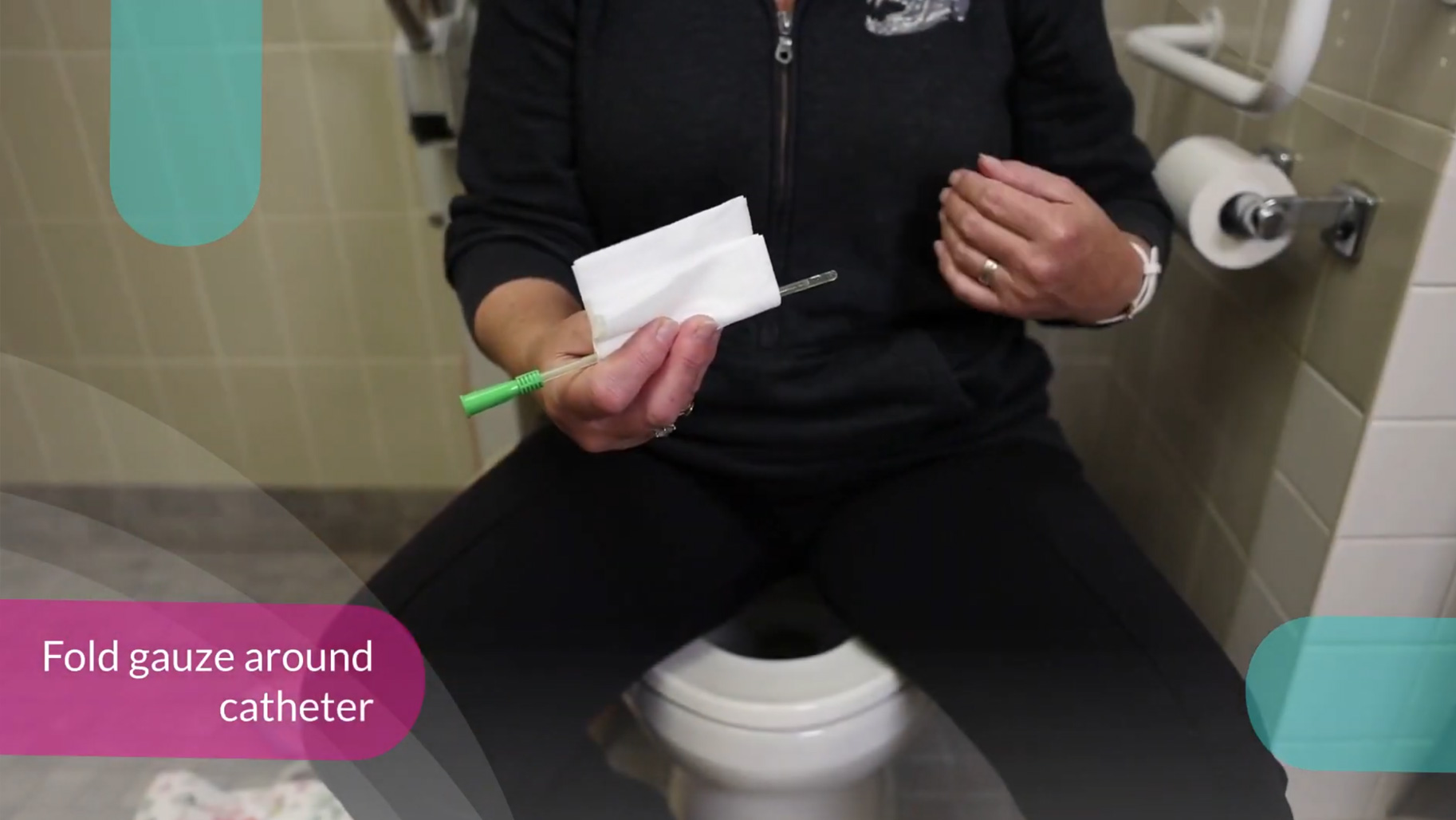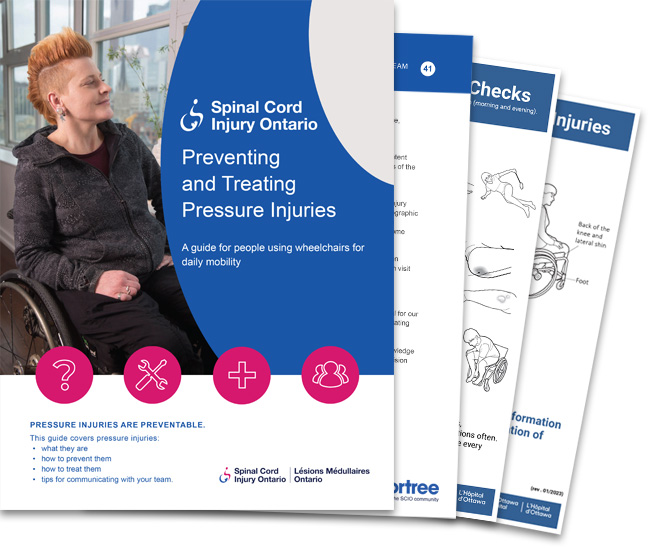This is a demonstration of how one person does self-catheterization in a public washroom. Because everyone is different, your level of function and ability, as well as input from your healthcare team will help you determine what works best for you. People with more mobility may be able to transfer onto the toilet and be able to tilt their pelvis; others may choose to avoid the transfer and use the technique shown.
The first step of self-catheterizing is to ensure your hands, pelvic area and catheterization supplies are kept as bacteria-free as possible, and you have all the required supplies organized and within reach. You may not always have access to a setting you know is perfectly clean, but as you’ll see in this video there are still best practices you can follow to help limit your exposure to bacteria. Including cleaning your hands after touching anything but yourself or your supplies.
After entering the washroom you’ll want to do a scan of the space to get a sense of how and when you can wash your hands, if paper towels are available, where you can dispose of waste, and most importantly, how and where you’ll position yourself to self-catheterize. It’s good practice to do a thorough hand washing at the sink first, before positioning yourself at the toilet, to remove any visible dirt or grime.
Position and lock your wheelchair leaving enough space between the toilet and the toes of your shoes to allow you to lift your feet. If possible slide forward in your wheelchair to allow for some pelvic tilt. Be careful not to move too close to the toilet, because this can put unwanted pressure on your feet which could cause them to fall into the toilet. Position your feet and legs with the soles of your feet facing together and your knees pointing outward. Unzip or remove any clothing you’ll need out of the way. Use your hand sanitizer to do a final hand cleaning. Make sure your supplies can be reached without touching any potentially unclean bathroom surfaces.
Now you’re ready to open the catheter. This is usually easiest if you pull the front of the catheter package away from the back. This approach is especially helpful if your hand function is limited. Some people may use a combination of teeth and fingers to pull open the catheter packaging.
Now you’ll attach the catheter to the leg bag. Take the catheter at the top and connect that end to the leg bag. This type of bag is useful because it has holes in the corners, so you can either hook your finger through the hole or strap the bag to your leg or wrist so the bag doesn’t fall. Lubricate the catheter. If you think you’ve touched anything other than your own supplies you should use your hand sanitizer once more.
Now use your wipes to wipe down once on each side and once down the middle, using a new wipe each time. Use your fingertip to locate the urethra. Place your finger beside the opening and use that finger to help guide where to insert the catheter tip. Slowly continue to insert the catheter. Once the urine begins to flow insert the catheter another 1 to 2 cm. Lower the leg bag. When the urine stops flowing gradually ease the catheter out, then pinch or bend the catheter, to make sure there is no backflow.
Let the catheter drain down into the bag until the catheter’s empty. Remove the catheter from the leg bag. Wipe any excess lube from your pelvic area and wipe your hands. Then you’re ready to zip up your pants or slide your leg back into your pant leg. Lower your feet and collect any waste to dispose of, wash your hands, and put all your supplies back in your supply bag.
If you have any questions about what you learn be sure to reach out to your healthcare team or service and resource providers like Spinal Cord Injury Ontario.
We would like to thank the people with lived experience who co-developed this video series:
- Lubna Aslam, former Spinal Cord Injury Ontario staff
- Jaspreet Dhaliwal, Peer Support Program Coordinator, Spinal Cord Injury Ontario
- Michel LeFeuvre-Watson
- Jacqui Kinahan, Peer Support Volunteer, Spinal Cord Injury Ontario
- Nancy Xia, Video Content Developer, Spinal Cord Injury Ontario
- Julie Watson, Peer Support Program Coordinator, Spinal Cord Injury Ontario
We would also like to thank UHN Toronto Rehab – Lyndhurst Centre staff who provided clinical subject matter expertise, source content and expert review of this video series:
- Sandra Mills, Patient Education and Engagement Lead, UHN – TRI Lyndhurst Spinal Cord Rehab Program
- Hannah Hollett, Clinical Coordinator Intrathecal Baclofen Program, UHN – TRI Lyndhurst Spinal Cord Rehab Program
- Dr. Cathy Craven, BA, MD, MSc, FRCPC, FASIA. Physical Medicine and Rehabilitation, Toronto Rehabilitation Institute Chair in SCI Rehabilitation; Medical Director , Spinal Cord Rehabilitation Program, UHN; Senior Scientist, KITE Research Institute, University Health Network; Professor, Department of Medicine, University of Toronto.





